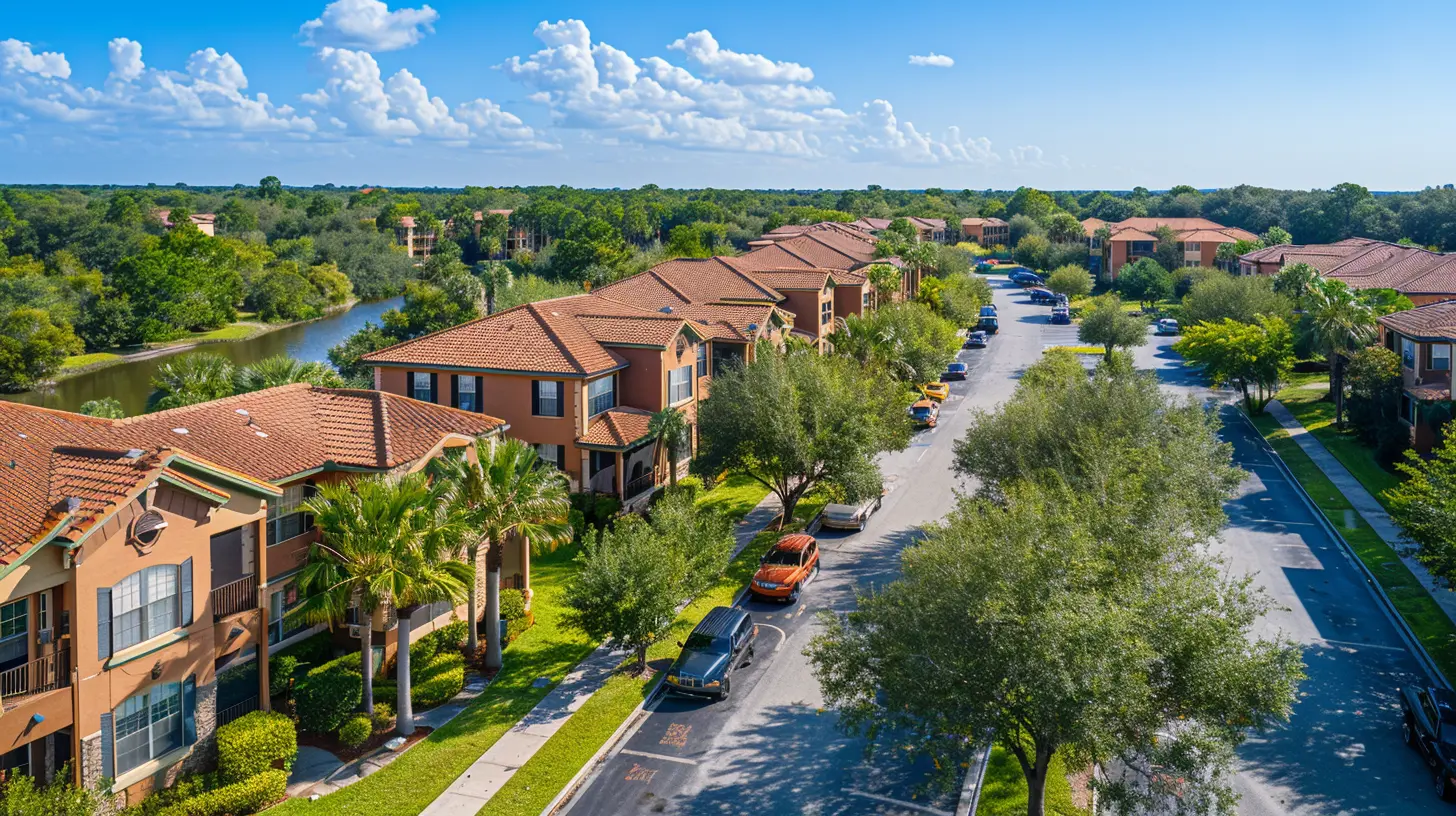How to Finance the Purchase of a Multifamily Property
11 July 2025
So, you're thinking about diving into real estate and buying a multifamily property? Smart move! Owning an apartment building or a duplex is like having a golden goose that lays rental checks instead of eggs. But before you start picking out your dream property, there's one not-so-tiny detail to figure out—how the heck are you going to pay for it?
Financing a multifamily property isn’t quite the same as buying a single-family home. Lenders see things differently, and there are more numbers, more paperwork, and, yes, more hoops to jump through. But don’t worry—I’m here to break it all down in a way that won’t make your brain hurt. 
Understanding Multifamily Property Financing
What Counts as a Multifamily Property?
First things first—what exactly is a multifamily property?A multifamily property is any real estate with two or more separate living units. That could be a duplex (2 units), triplex (3 units), fourplex (4 units), or even a massive apartment building.
Now, for loan purposes:
- If the property has 2-4 units, it’s considered residential (meaning you can use some traditional loan options).
- If it has 5+ units, it’s considered commercial, which comes with different (and sometimes trickier) financing rules.
Knowing whether your target property is residential or commercial will help you figure out which financing options are available. 
The Best Ways to Finance a Multifamily Property
Now, let’s talk about the fun part—how to convince a lender to hand you a giant pile of money.1. Conventional Loans (Good Ol’ Reliable)
If you're buying a 2-4 unit property, a conventional mortgage (like the ones used for single-family homes) might work. These loans are usually backed by Fannie Mae or Freddie Mac and come with relatively decent interest rates.
Pros:
✔️ Low down payment (as little as 15% for a multi-unit home)
✔️ Fixed and adjustable-rate options
✔️ Lower interest rates than commercial loans
Cons:
❌ Stricter credit score and income requirements
❌ Might need a larger down payment (compared to a single-family home)
This is great if you’re living in one unit and renting out the others—it’s called house hacking (a term that makes you sound like a real estate ninja).
2. FHA Loans (House Hacker’s Best Friend)
If you want to buy a multifamily property with a super low down payment (3.5%), an FHA loan could be your best bet. But there’s a catch—you must live in one of the units for at least one year.Pros:
✔️ Down payment as low as 3.5%
✔️ Easier to qualify for than conventional loans
✔️ Allows for lower credit scores
Cons:
❌ You must live in the property (no absentee landlords allowed)
❌ Requires mortgage insurance (extra monthly cost)
If you’re looking for an easy entry point into real estate investing AND need a place to live, this is a golden ticket.
3. VA Loans (For The Military Heroes)
If you’re a veteran, active-duty service member, or eligible spouse, you could get a VA loan to buy a multifamily property (up to 4 units) with ZERO down payment. That’s right, $0 down!Pros:
✔️ No down payment required
✔️ No private mortgage insurance (PMI)
✔️ Lower interest rates
Cons:
❌ Must meet military service requirements
❌ You must live in one of the units
If you qualify, this is one of the best ways to get into multifamily real estate without breaking the bank.
4. Commercial Loans (For the Big Players)
Once you step into the world of 5+ unit properties, you enter the realm of commercial loans. These come with higher interest rates, shorter loan terms, and stricter requirements.Pros:
✔️ Higher loan amounts available
✔️ Designed for apartment buildings and larger properties
Cons:
❌ Higher down payments (typically 20-30%)
❌ Shorter loan terms (often 5-10 years instead of 30)
❌ Stricter income and credit requirements
These are best suited for experienced investors or those with strong financial backing.
5. Seller Financing (Because Banks Aren’t the Only Option)
Sometimes, the easiest way to buy a multifamily property is by working directly with the seller instead of dealing with a bank. In seller financing, the seller acts as your lender, and you make payments directly to them.Pros:
✔️ Easier approval (ideal if your credit isn't perfect)
✔️ Terms can be negotiated directly
✔️ Can avoid the traditional loan process
Cons:
❌ Sellers may charge higher interest rates
❌ Requires a seller willing to do this (and they’re not always easy to find)
This can be a creative financing solution when banks aren’t giving you the love you need.
6. Hard Money Loans (For Speed Demons)
Hard money loans are short-term, high-interest loans provided by private lenders or investors. They’re great if you need to close fast, but they come with hefty interest rates (often 8-15%).Pros:
✔️ Fast approval (often within days)
✔️ No need for perfect credit
✔️ Works well for fix-and-flip investors
Cons:
❌ High interest rates (ouch)
❌ Short repayment terms (usually 12-36 months)
Use this when you need fast cash and plan to either refinance or sell quickly. 
Bonus Tips for Financing Success
1. Boost Your Credit Score – Higher credit score = better loan terms. Aim for at least 680, but higher is always better.2. Save for a Bigger Down Payment – More cash upfront can lower your financing costs.
3. Consider Partnering Up – Finding a financial partner can improve your loan approval chances.
4. Keep Your Debt-to-Income Ratio Low – Lenders love borrowers with less debt and more income (shocking, right?).
5. Have a Solid Business Plan – If you're dealing with commercial loans, lenders want to see a clear investment strategy.

Final Thoughts
Financing a multifamily property isn’t rocket science, but it does require strategy. The right loan depends on your financial situation, the size of the property, and whether you plan to live there.If you're new to real estate investing, an FHA loan or conventional loan can be a great starting point. If you're going big with 5+ units, you’ll want to look at commercial loans. And if you're feeling creative, seller financing or partnerships could be great options.
At the end of the day, real estate investing is about making smart moves, not just big ones. So, do your homework, crunch your numbers, and get ready to buy that next cash-flowing property!
all images in this post were generated using AI tools
Category:
Multifamily PropertiesAuthor:

Vincent Clayton
Discussion
rate this article
1 comments
Blair Bennett
In the dance of bricks and dreams, Funds weave their tale, Unlocking doors to futures bright, With wisdom as your guiding light, Invest wisely, let your visions sail.
July 14, 2025 at 4:43 AM

Vincent Clayton
Thank you for your poetic insight! Investing in multifamily properties is indeed a journey where financial wisdom and vision play crucial roles.


